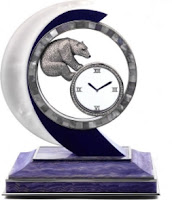Copyright © Françoise Herrmann
At the end of 2017, after a year of highlighting more women inventors than ever before, and especially Millenial (Generation Z) women inventors, Patents on the soles of your shoes would like to join British photographer, Jo Farrell, in Celebraring the soles of heroes.
In this photography project, Farrell interviewed, befriended and photographed, forty (almost extinct) Chinese women with bound feet, during the course of several summers, in China.
Farrell’s photography is truly extraordinary in that it transports the viewer to a place of love and celebration. The viewer discovers these women, far from the horrors of the foot binding practices that martyed many generations of little Chinese girls, at the hands of their mothers, caught in a web of oppression and perverted sexuality; and still farther from the subsequent blame and shame that these women further endured during the Cultural Revolution, when the practices of foot binding were outlawed, on still more insensitive grounds. Indeed, foot binding was outlawed because the women with 3-inch Lotus feet were crippled, which prevented them from participating in the labor force.
Patents on the soles of your shoes embraces the silent beauty of the black and white photographs, and the dignity of the women’s serenity, only to renew a commitment. A firm commitment to continue searching, and finding, the patented inventions that now cushion and cradle the soles of little girls’ feet, their mothers’ and fathers’ too, so they may climb comfortably, indeed, leap to the summit of every mountain.
Jo Farrell’s photography, in Farrell’s own words:
"It’s not easy to sell photos of women with bound feet; it’s honestly not something people want on their walls. However, it’s impossible for me not to go back. It’s like having a whole series of grandmothers; I need to know the rest of their stories. My hope is that these photographs will find their place in a prominent museum or gallery and be published in a major book.”
Notes:
(1) For more information, and referencs, on the practices of foot binding, and Lotus shoes, at Patents on the Soles of your Shoes, please visit the following posts 2015 (1), 2015 (2), 2016.
(2) All the black & white photographs posted above: Copyright © Jo Farrell
(1) For more information, and referencs, on the practices of foot binding, and Lotus shoes, at Patents on the Soles of your Shoes, please visit the following posts 2015 (1), 2015 (2), 2016.
(2) All the black & white photographs posted above: Copyright © Jo Farrell
Living history Project
Jo Farrell – My life
http://www.scmp.com/magazines/post-magazine/article/1655406/my-life-jo-farrell
Kilpatrick, Nick (2014) Photos: The last living women with bound feet, in The Washington Post
https://www.washingtonpost.com/news/morning-mix/wp/2014/06/04/photos-the-last-living-women-with-bound-feet/?utm_term=.b969c2ce283b
https://www.washingtonpost.com/news/morning-mix/wp/2014/06/04/photos-the-last-living-women-with-bound-feet/?utm_term=.b969c2ce283b
Herrmann, F. (2015 -1) Patent torture - Lotus shoes
Herrmann, F. (2015-2) Further Feminist reading on footbinding
Herrmann, F. (2016) Exhibit: The history of shoes































